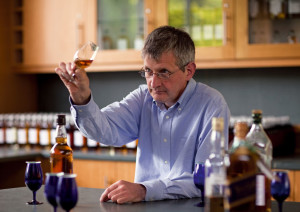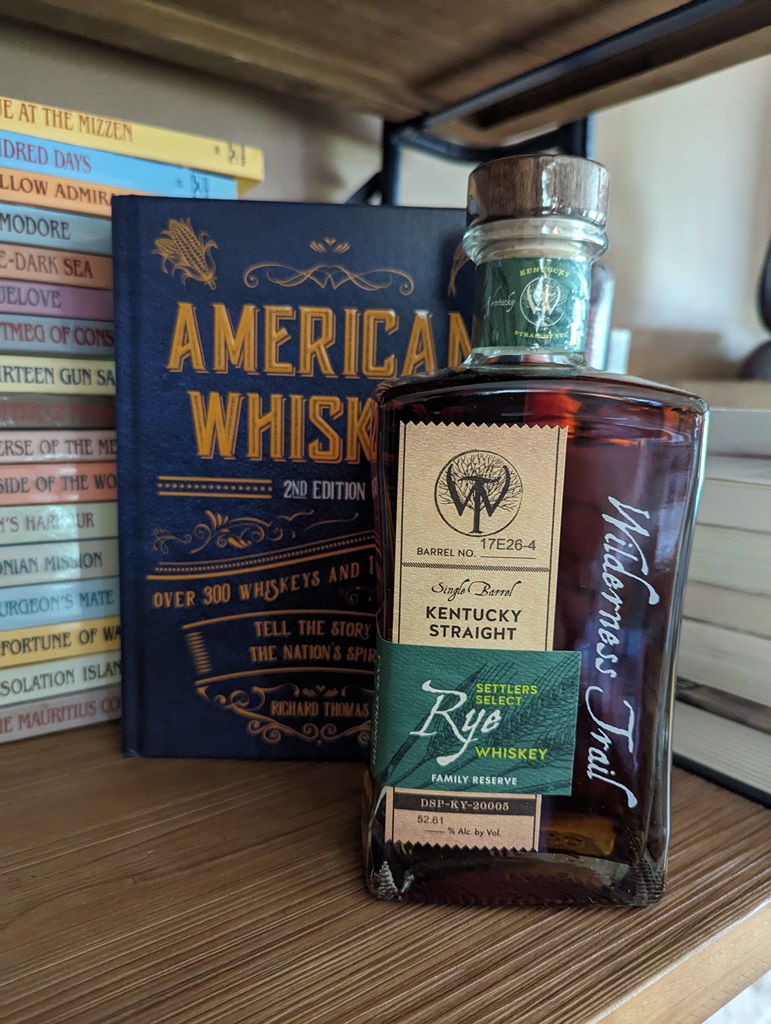Diageo’s Wild Ride?
Observers Were Shocked When Diageo Closed Masters Of Whisky. They Shouldn’t Have Been.
By Kurt Maitland and Richard Thomas

In the world of spirits, none is bigger than Diageo. This London-based beverage company owns Smirnoff, Johnnie Walker, Guinness, and Bailey’s, thus leading the markets for vodka, blended Scotch whisky, stout and liqueurs. On top of that, the company owns some very prominent brand names in gin, rum and Canadian whisky among what is a substantial drinks portfolio.
Insofar as whisk(e)y is specifically concerned, Diageo owns more than 20 distilleries and brands, ranging from iconic single malts like Lagavulin and Talisker to American whiskeys such as Bulleit and George Dickel. The depth and breadth of their whisk(e)y portfolio is astonishing. In our interview last year with Jim Beveridge, Master Blender for Johnnie Walker, we asked if there were any Scottish single malts that they didn’t have that he would love to use as part of a Johnnie Walker blend. His candid response was “I think we have most of the bases covered in our arsenal.” That was no boast, not from that quiet and reserved man, but just a simple statement of fact.
Due to their footprint in world whiskey, any move Diageo makes has the (often realized) potential for causing real upheaval, frequently leaving observers stunned. Yet while Diageo’s moves ought to retain their powers of surprise and trepidation, the company’s actions shouldn’t really shock anymore. Any review of Diageo’s past behavior shows how they are remarkably consistent in certain respects, and the MOW closure fits right into a series of recent moves by the company.

(Credit: Diageo)
The Tennessee Whiskey Law Fracas
As previously described, Johnnie Walker is the world’s top-selling whisky brand and one of the jewels in Diageo’s crown. Yet in recent years the company’s executives have presumably felt some anxiety about the strong growth of Jack Daniel’s. More is at stake than just bragging rights over who is top dog, as so many consumers in developing markets are reputed to put stock in the prestige of being number one.
In 2013, Jack Daniel’s parent company Brown-Forman invested in some brand building by pushing for the passage of a new whiskey law in Tennessee. A cornerstone of Jack Daniel’s production method, the Lincoln County Process (LCP), was defined as the distinctive characteristic of Tennessee Whiskey under this new law. Diageo responded the following year by attacking the law in both the statehouse and the courts, pursuing a strategy as heavy handed as it was ill-advised.
Diageo’s actions alienated the many croakers in the American whiskey blogosphere who had previously been dismissive of the LCP, turning them away from griping about Brown-Forman’s marketing gimmicks and onto criticizing Diageo’s tactics instead. The company’s claim to be defending the interests of Tennessee’s craft distillers was instantly revealed as transparently phony when most of those micro-distillers came out in support of the 2013 law.
Worst of all was Diageo’s shoddy treatment of their property George Dickel, as the LCP-using company was sent out as a spear carrier in a battle that was very much against its own interests. Diageo essentially threw Dickel under a bus in the name of Johnnie Walker, and in a contest that was a guaranteed loser at that. The Tennessee state house was never going to take sides against Jack Daniel’s, a major source of economic activity in the state. Dickel’s treatment by the parent company was widely speculated to have played a role in the departure from Dickel of Master Distiller John Lunn in March 2015, and may have contributed to the recent and similar departure of his successor and then-deputy Allissa Henley as well.

(Credit: Diageo)
No Foresight On Bulleit
American bourbon bloggers frequently complain about, and sometimes even demonize, Diageo’s Orphan Barrel series. Sadly, the best of these complaints fall into the realm of armchair quarterbacking of what Diageo should have done with its stock and ivory tower nitpicking of the company’s marketing choices. What is more, the fixation on Orphan Barrel misses how Diageo nearly dropped the ball on Bulleit.
Bulleit’s fortunes have run practically in tandem with the larger Bourbon Boom, with the brand shipping in 2014 roughly double the number of cases that it did in 2012. Yet Four Roses, the principal supplier of Bulleit’s bourbon stock, was growing as just as fast, if not faster. That Four Roses would cut off Bulleit so as to consolidate production and maximize their own future supply was as logical as it was inevitable, but the timing of events suggest that Diageo wasn’t planning ahead: first Four Roses declined to renew Bulleit’s supply contract, and only after that did Diageo announce it was building a $115 million plant for Bulleit.
To Diageo’s credit, the company acted swiftly and Bulleit’s new facility should open later this year. Yet even if Bulleit can avoid a gap opening up between its Four Roses-sourced stock and it’s new, in-house whiskey a few years from now, they still might find future growth constrained by a finite supply.
WTF With Bushmills?
The Irish whiskey resurgence is one of the great comeback stories of the wider world whiskey boom. Ireland’s whiskey industry is still small by global standards, and the 6.2 million cases they shipped last year was roughly equivalent to the sales of Ballentine’s alone. Even so, those sales represent a 220% increase over the past decade, and some experts see sales doubling on that by 2020.
Yet in the midst of these boomtimes, Diageo decided to trade Bushmills, the second-ranked Irish whiskey brand, to Jose Cuervo. Making the trade even stranger is the widespread belief in Irish circles that Diageo had been building up stock at Bushmills, stock that now belongs to Cuervo. In exchange for this, Diageo got cash and Don Julio, a brand that barely scrapes into the tequila Top 10. Upon gaining Bushmills, Jose Cuervo promptly announced a £30 million investment and began releasing new expressions.
This would hardly be the first time Diageo’s choices in Ireland left observers confused. After investing €40 million into their Waterford Guinness Brewery in the mid-2000s, Diageo opted to close the plant in 2013 and then sell it for a mere €7.2 million to a group of investors who opened a whiskey distillery there.
Masters of Whisky
Early last month Diageo announced that it would shutter their Masters of Whisky (MOW) program at the end of September, this being the latest in the succession of Diageo whoppers.
To put the closure into context, if you’ve spent any time with a whiskey brand ambassador, you probably have Diageo’s Masters of Whisky program to ultimately thank for it. Evan Cattanach, who passed away a few days before Diageo made the MOW announcement, was the first Master of Whisky. He earned this title after having worked at as many as 15 Scottish distilleries, and was arguably the first Scottish Master Distiller to travel the globe teaching drinkers about Johnnie Walker and single malts. He became the original “Brand Ambassador” for Johnnie Walker, and it was Evan who taught the first batch of Diageo’s American MOWs their trade.
The MOW concept quickly caught on, and helped to improve brand awareness via tastings and seminars led by this well-trained crew of whisky evangelists. It has been so effective that most whisk(e)y companies have gone on to create their own versions of MOW, that program serving as the blueprint that much of the industry follows.
Many in the industry felt that the announcement could have been postponed for a time, in order to give the past and current MOWs time to grieve for the passing of their founder, Evan Cattanach. Losing a mentor and potentially your job within a one week period is obviously a hard blow, to say nothing of how Cattanach’s son is a current MOW.
It’s ironic that what Cattanach and the MOW did for Diageo was attach faces to the brands for the public, given how the closure fits the profile for an act by a faceless corporation. People fondly remember being introduced to a single malt or one of the Johnnie Walkers by Cattanach or one of the other Masters of Whisky. They helped to give a large corporation a pulse, and where anger was expressed, the timing and manner of this change and the effect it would have on those that taught many of us drove it.
As callous as the move was, the popular reaction to it among those who interacted with MOW overlooks how Diageo surely had very sound reasoning behind cancelling the program. Robin Robinson of Robin Robinson, LLC made valid points about the changes in the industry since MOW’s creation, both on The Whiskey Reviewer and in commentary elsewhere. New methods might be needed to reach today’s whisky fans, especially those who have been to tastings and already familiar with Scotch and Scotland.
Perhaps they are moving to something closer to the hybrid Robin envisioned when he said “you need to be a hybrid, a brand ambassador who thinks like a salesman or a salesman who can teach and charm like a brand ambassador, actively tying education to moving whisky off of the shelf, and whose value can be determined in a more calibrated way.” In the short term, MOW is to be replaced by a program of luxury experiences aimed at increasing measurable sales through particular venues.
The closure of MOW was handled in a cold-blooded fashion, but also a decisive one. Where another company might have laid off a third or half of the staff as part of a transition, Diageo scrapped the whole thing in one swipe. It may also prove short-sighted, but only time will tell that out, and a company as big as Diageo can absorb a lot of self-inflicted wounds and remain standing.
The one thing the closure was not was shockingly bizarre. It was, in fact, very much in line with how Diageo does business.


Wow. Outstanding article, gentlemen. Thank you!
Regardless of, and despite, what anyone at the top claims ; it’s ALWAYS about money.
Totally enjoyed the article….